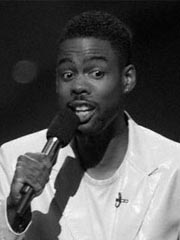
Richard Pryor | Redd Foxx | Flip Wilson | Dick Gregory | Bill Cosby | Eddie Murphy
History

American stand-up comedy has its roots in various traditions of entertainment popular in the late 19th century, ranging from vaudeville and humorist monologues (with Mark Twain a notable master), to Yiddish theatre and circus clown routines. Most early comedians were merely viewed as "joke tellers," who warmed up the audience as an opening act, or kept the crowds entertained during intermissions. Being a comedian was often considered a stepping stone to a proper career in show business. Jokes were generally broad and (oft when not broadcast) mildly risqué, and often dwelt on stock comic themes ("mother-in-law jokes," ethnic humor). "Blue humor," or comedy that was considered indecent, was popular in many nightclubs, but working "blue" greatly limited a comedian's chance for legitimate success.
The fathers of stand up comedy were the "masters of ceremony", as they often were referred to as, of the golden age of radio broadcasting. Jack Benny, Fred Allen, and Bob Hope all came from vaudville and often opened their listening programs with monologues and routines. These were topical, characterized by ad-libs and discussions about anything from the latest films to a missing birthday. The programs largely were split into the opening monologue, musical number, followed by a skit or story routine. Their guests were varied and included other radio comediens of the day including Burns and Allen. In the case of Benny and Fred Allen, a "feud" between the comediens was used as comic material for nearly a decade. However, beginning in the late 1950s and into the 1960s , a new generation of American comedians began to explore political topics, race relations, and sexual humor. Stand-up comedy shifted from quick jokes and one liners to monologues, often with dark humor and cutting satire.Lenny Bruce became particularly influential in pushing the boundaries of what was considered acceptable entertainment, although amongst comedians such "boundary pushing" dates back at least to vaudeville in a traditional joke called The Aristocrats that comedians would tell usually only amongst themselves. Afrian-American comedians such as Redd Foxx, long relegated to segregated venues, also began to cross over to white audiences at this time.
Stand-up comedy exploded during the 1970s, with several entertainers becoming major stars based on stand up comedy performances. Stand-up expanded from nightclubs and theaters to major concerts in sports arenas. Richard Pryor and George Carlin followed Lenny Bruce's acerbic style to become counterculture icons. Steve Martin and Bill Cosby had similar levels of success with gentler comic routines. The older style of stand-up comedy was kept alive by Rodney Dangerfield and Buddy Hackett, who enjoyed revived careers. Television programs such as Saturday Night Live and The Tonight Show launched the careers of other stand-up comedy stars.
The great popularity of stand-up comedy led to a boom in stand-up comedy venues for both locally based and touring comics in many cities. Many stand up stars landed major television deals, and established television and film stars such as Robin Williams, Eddie Murphy, and Billy Crystal tested their comic chops with live stand up comedy appearances. The advent of HBO (which could present comedians uncensored) and other cable channels such as Comedy Central added to the stand-up comedy boom.
By the 1990s, the glut of stand-up comedy led to its decline, as the market became somewhat flooded with comedians considered by some to be mediocre. However, established stand-up comedians still commanded top ticket prices, and talented new comedians were presented with many smaller venues to establish themselves in.

In the 2000s, comedy has had a large resurgance, due largely in part to newly accessible and popular media outlets, such as the Internet and television channels like Comedy Central. There is currently rennaissance of sorts occurring in the comedy world, with younger comics (often between the ages of fifteen and twenty nine) finding their way on stage and becoming the norm, evolving the art form in a new direction for a new age.
Despite many great clubs all across the country, New York is still considered by many to be the heart of the stand-up scene, with many of the young rising stars as well as the top performers regularly trying out material at the Comedy Cellar when not on the road. Also, Caroline's on Broadway is considered to be one of the top clubs in the country for headliners, with past performers including Andrew Dice Clay, Bill Hicks, Colin Quinn, Gilbert Gottfried,Mitch Hedburg, Jerry Seinfeld, and many more.
Los Angeles is the other major market for stand-up comedy, being a home to much of the American entertainment industry, as well as providing stand-up comics with the opportunity to branch out into television and film. The Los Angeles comedy scene consistently showcases many of the best comics in the world regularly playing at major comedy venues, such as THe Laugh Factory, the Hollywood Imporv, and the Comedy Store. Prominent figures in the L.A. comedy scene include Dane Cook, Kathy Griffin, Dom Irrera, Jay Leno, and many others.